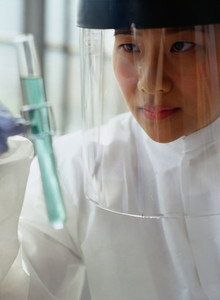Following the expiration of patents on the originator molecules, copied products have been introduced into the market. EU regulators have named these products as ‘biosimilars’, that is ‘similar biological medicinal products’; and US regulators refer to them as ‘follow-on biologics’. Specific regulatory pathways have also been established for these biosimilar products, which differ from those for ‘chemical generics’ [1].
Significant cost-savings are expected from using biosimilars, but major concerns over the efficacy and quality of the products exists. Professor Jelkmann’s recent review article of the European experience of biosimilars has highlighted some issues that have arisen since the introduction of biosimilars in Europe [2, 3].
Due to the complex manufacturing processes involved in producing a biopharmaceutical, it is not possible to produce an exact copy of the innovator product. The composition of recombinant medicines are influenced by many factors including the plasmid used, the host cell, the culturing process, purification steps, post-translational modifications, formulation, and packaging—all of which may differ between manufacturers. It is therefore imperative that pharmacists and physicians be aware of the main legal and pharmacological specifics of biosimilars [2].
The EMA states that, ‘the active substance of a biosimilar medicine is similar to the one of the biological reference medicine’ [4]. In order to apply as a biosimilar in the EU, the applicant must use a comparator that is filed in the EU. FDA has a similar approach and Canada is in the process of finalising its own rules for the approval of follow-on biologics. A filing in Japan must also use a Japanese ‘Precedent Biotechnology Drug’ as the reference.
Therefore, current consensus is that, in order to use the term ‘biosimilar’ correctly and legally, the biopharmaceutical follow-on products must be approved under a defined regulatory pathway specific to this sophisticated class of drug; and the term ‘biosimilar’ should not be used for copied products that are used in countries with a less-controlled market.
Do you find the terminology surrounding biosimilars confusing or have you seen the term being used in an incorrect manner? What steps are you taking to inform yourselves about this new pharmaceutical frontier? Please feel free to contact us at editorial@gabionline.net or leave a comment below.
If you are interested in contributing a research article in a similar area to the GaBI Journal, please send us your submission via science@gabi-journal.net.
Related article
FDA gives some insight into biosimilar pathway
References
1. Kresse GB. Biosimilars – Science, status, and strategic perspective. Eur J Pharm Biopharm. 2009;72:479-86.
2. Jelkmann W. Biosimilar epoetins and other ‘follow-on’ biologics: Update on the European experiences. Am J Hematol. 2010; 85:771-80.
3. GaBI Online - Generics and Biosimilars Initiative. Observations on the introduction of biosimilar epoetins into Europe [www.gabionline.net]. Mol, Belgium: Pro Pharma Communications International; [cited 2011 August 12]. Available from: www.gabionline.net/Biosimilars/Research/Observations-on-the-introduction-of-biosimilar-epoetins-into-Europe
4. EMA. Questions and Answers on biosimilar medicines (similar biological medicinal products). 2008. Available from: www.emea.europa.eu/pdfs/human/pcwp/7456206en.pdf








 0
0











Post your comment